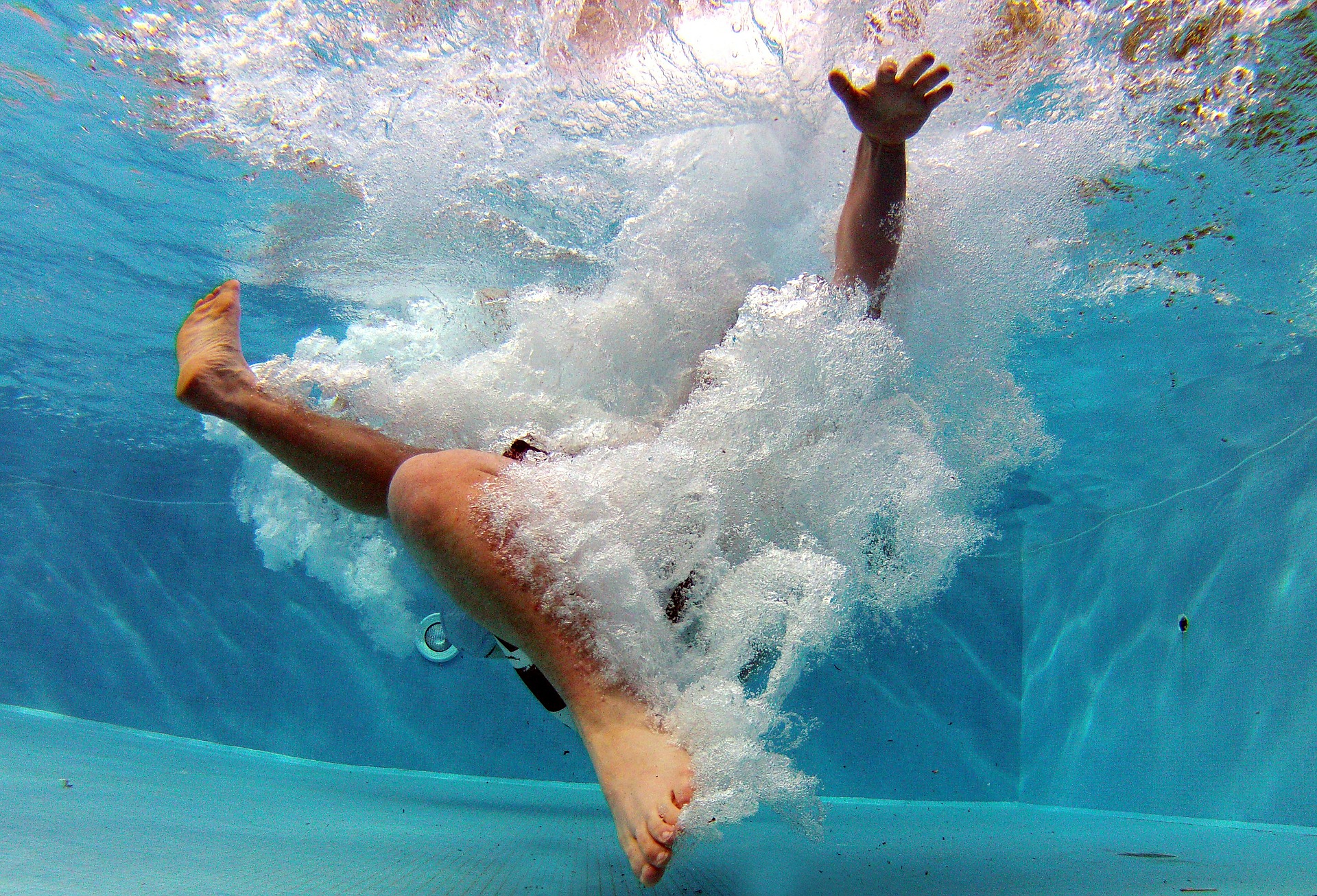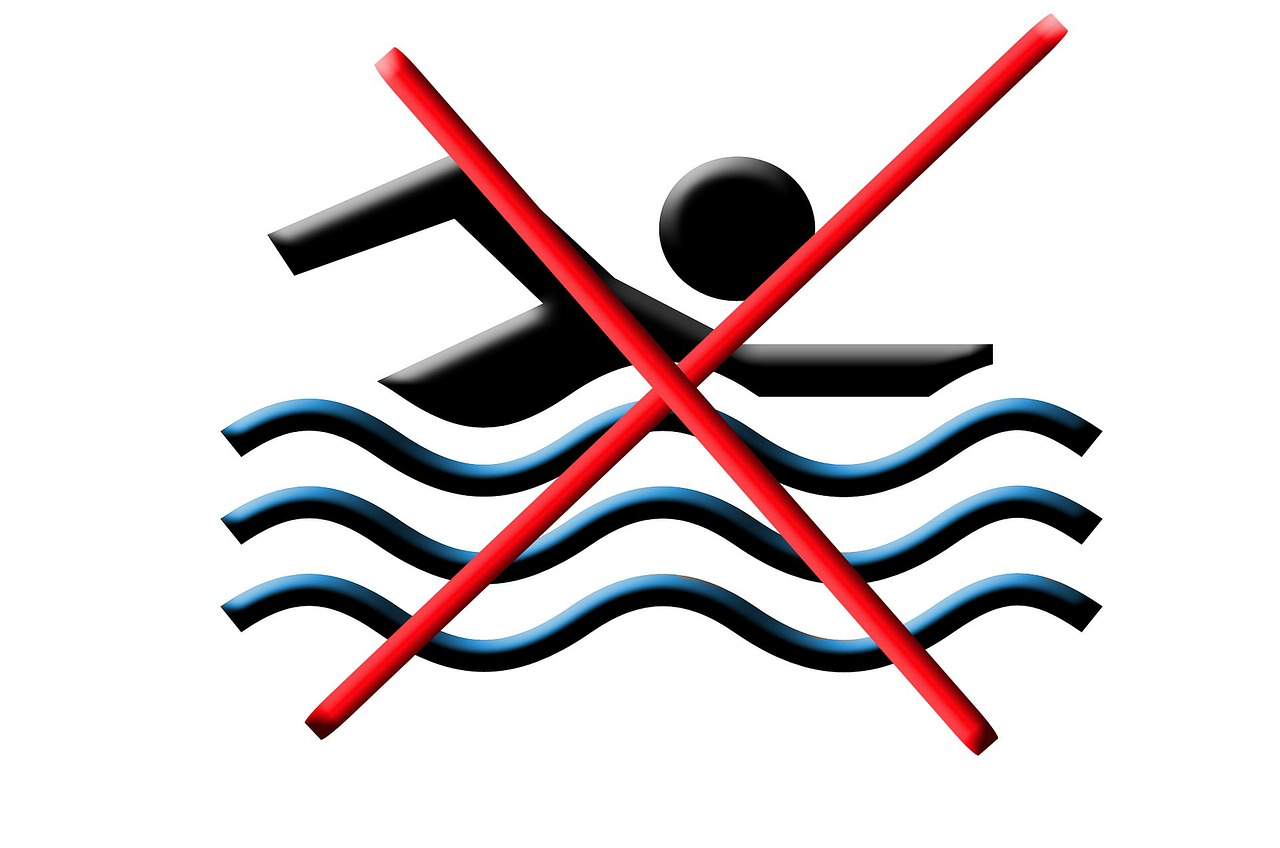Swimming pools can be in various sizes and shapes, ranging from small indoor swimming pools to large-scale social areas, as a result of technological developments in recent years. For this reason, it would be more accurate to define it as swimming pools and similar areas. We can evaluate health problems that may arise from swimming pools and similar areas in three groups. These; (a) suffocation and injuries, (b) microbiological risks, and (c) exposure to various chemicals.
Drowning in water is one of the most common causes of death in the world. While not every drowning event results in death, it may result in permanent health problems that can last a lifetime in some individuals. In drowning the most important factors affecting the prognosis is to be able to apply an effective rescue and first aid in a short time and then to apply a good hospital treatment program. Drowning is mostly observed in young children and is seen in individual swimming pools and similar areas in homes rather than public swimming pools.

Studies show that cutting the connection of the pool with other social areas (such as a fence) reduces drownings by more than 50%. For this reason, swimming pools should be separated from places such as bars, cafes, etc. with an iron railing, etc., with a height of at least 1.2 m. Similarly, safety precautions should be taken in individual pools in homes.
The majority of sports-related spinal cord injuries occur during diving/jumping. Injuries that occur during diving usually involve cervical vertebrae, resulting in quadriplegia or paraplegia. Education and warning signs are among the protective measures that should be applied in order to avoid these problems. Other injuries (such as head, arm, hand, foot, heel region injuries, etc.) can be seen and among the main causes of such injuries; slippery floors, the presence of free water areas in the environment, running around the pool, drinking soft drinks around the pool, etc. glass particles caused by breaking the containers can be counted. Effective control of the pool environment, pool safety training and the use of appropriate warning signs will reduce such injuries. Regulations regarding pool water temperature are especially important for those with health problems, pregnant women and children.
Public Health Specialist Assist. Prof. Dr. Nurten ELKİN stated that the microbiological risks that may arise from swimming pools are usually caused by the water being contaminated with the feces of the pool users. In addition, the water being used may be contaminated from the source (from the feces of animals such as rodents and birds). Another source of pathological microorganisms in pool water is the dumping of human-made garbage into the pool or its surroundings. However, regardless of the source of microbiological contamination, the most important cause of pool-borne microbiological outbreaks is the inadequacy of disinfection practices.

Parasites (43.6%) are generally found to be causative agent in pool-borne infections, which were examined in detail. As viral agents, adenovirus, hepatitis A, norovirus and echovirus are generally detected. Shigella and Escherichia coli may be responsible for epidemics from swimming pools. While diarrhea, fever and nausea are observed in Shigella outbreaks; Epidemics caused by E. coli may include bloody diarrhea, hemolytic uremic syndrome (a disease characterized by the development of hemolytic anemia and acute renal failure, usually in young children and the elderly), vomiting, and fever. Giardia and Cryptosporidium are fecal-borne parasites of increasing importance in pond-borne epidemics.
It would be appropriate to prevent the use of the pool in large-scale contamination. In order to prevent large-scale contamination, arrangements can be made to direct people to use bathrooms and toilets before entering the pool and small children can be benefited from very small pools. In case of fecal contamination, rapid discharge of the pool water and disinfection of the pool can be ensured. Those with gastroenteritis should be advised not to use public swimming pools during their illness and for at least one week after recovery. In addition to fecal microorganisms, some other pathogens can also contaminate pool water and the environment with human waste.
Disinfection is always more difficult in water environments where hot water is used. In such environments, pH control, disinfectant use, daily cleaning of the surfaces, weekly drainage of the entire system and regular control of the mechanisms in the system (such as filters, ventilation) should be emphasized. In addition to frequently cleaning the surfaces that people and water will come into contact with is extremely important to inform people about such diseases.
Chemical risks; Chemicals that can be found in swimming pools can be caused by the water used, disinfectants and the users themselves (such as sweat, urine, soap waste, cosmetics, sunscreens). Ingestion of water, inhalation of vaporized water or aerosolized particles, and skin contact are the main routes of transmission of chemicals in pools to humans.

Some points are important for the regulation, follow-up and control of activities related to swimming pools, arranging swimming pools in a way that does not threaten public health. Monitoring and control; In addition to the person responsible for the operation of swimming pools or similar areas is extremely important that the technical personnel who will directly perform the applications are trained. There should be rescue/evacuation plans made for all kinds of emergency situations and measures taken for emergencies. Again, the technical personnel to be assigned here must have the knowledge and ability to perform and applications requested/to be requested by the relevant Ministry. Community Education and Information: Business managers, local official health unit officials, public health units, swimming clubs, sports clubs and other units that may be related should implement education activities that inform the community about swimming pool safety and hygiene. It is important that the necessary monitoring and controls are carried out by the local health authorities in accordance with the legal regulations and that the relevant regulations are made.
In conclusion; Dr. ELKİN stated that swimming pools and similar areas may contain various physical, chemical and microbiological risks that may threaten the health of the society, and the practices for the control and regulation of these environments have an important place in preventive health services.
Reference
Current Issues and Approaches to Public Health. 2009/ ANKARA

 Studies show that cutting the connection of the pool with other social areas (such as a fence) reduces drownings by more than 50%. For this reason, swimming pools should be separated from places such as bars, cafes, etc. with an iron railing, etc., with a height of at least 1.2 m. Similarly, safety precautions should be taken in individual pools in homes.
Studies show that cutting the connection of the pool with other social areas (such as a fence) reduces drownings by more than 50%. For this reason, swimming pools should be separated from places such as bars, cafes, etc. with an iron railing, etc., with a height of at least 1.2 m. Similarly, safety precautions should be taken in individual pools in homes. Parasites (43.6%) are generally found to be causative agent in pool-borne infections, which were examined in detail. As viral agents, adenovirus, hepatitis A, norovirus and echovirus are generally detected. Shigella and Escherichia coli may be responsible for epidemics from swimming pools. While diarrhea, fever and nausea are observed in Shigella outbreaks; Epidemics caused by E. coli may include bloody diarrhea, hemolytic uremic syndrome (a disease characterized by the development of hemolytic anemia and acute renal failure, usually in young children and the elderly), vomiting, and fever. Giardia and Cryptosporidium are fecal-borne parasites of increasing importance in pond-borne epidemics.
Parasites (43.6%) are generally found to be causative agent in pool-borne infections, which were examined in detail. As viral agents, adenovirus, hepatitis A, norovirus and echovirus are generally detected. Shigella and Escherichia coli may be responsible for epidemics from swimming pools. While diarrhea, fever and nausea are observed in Shigella outbreaks; Epidemics caused by E. coli may include bloody diarrhea, hemolytic uremic syndrome (a disease characterized by the development of hemolytic anemia and acute renal failure, usually in young children and the elderly), vomiting, and fever. Giardia and Cryptosporidium are fecal-borne parasites of increasing importance in pond-borne epidemics. Some points are important for the regulation, follow-up and control of activities related to swimming pools, arranging swimming pools in a way that does not threaten public health. Monitoring and control; In addition to the person responsible for the operation of swimming pools or similar areas is extremely important that the technical personnel who will directly perform the applications are trained. There should be rescue/evacuation plans made for all kinds of emergency situations and measures taken for emergencies. Again, the technical personnel to be assigned here must have the knowledge and ability to perform and applications requested/to be requested by the relevant Ministry. Community Education and Information: Business managers, local official health unit officials, public health units, swimming clubs, sports clubs and other units that may be related should implement education activities that inform the community about swimming pool safety and hygiene. It is important that the necessary monitoring and controls are carried out by the local health authorities in accordance with the legal regulations and that the relevant regulations are made.
Some points are important for the regulation, follow-up and control of activities related to swimming pools, arranging swimming pools in a way that does not threaten public health. Monitoring and control; In addition to the person responsible for the operation of swimming pools or similar areas is extremely important that the technical personnel who will directly perform the applications are trained. There should be rescue/evacuation plans made for all kinds of emergency situations and measures taken for emergencies. Again, the technical personnel to be assigned here must have the knowledge and ability to perform and applications requested/to be requested by the relevant Ministry. Community Education and Information: Business managers, local official health unit officials, public health units, swimming clubs, sports clubs and other units that may be related should implement education activities that inform the community about swimming pool safety and hygiene. It is important that the necessary monitoring and controls are carried out by the local health authorities in accordance with the legal regulations and that the relevant regulations are made.